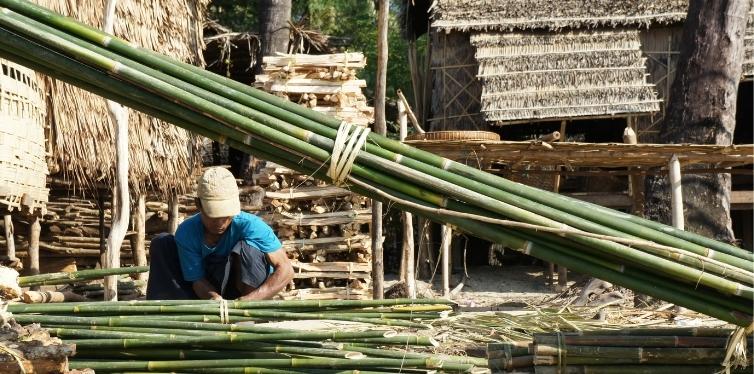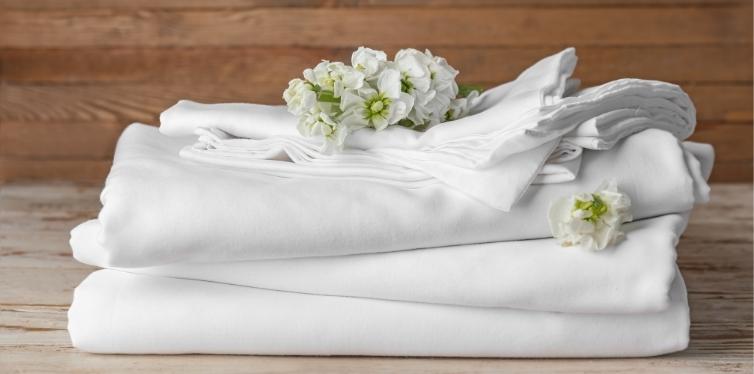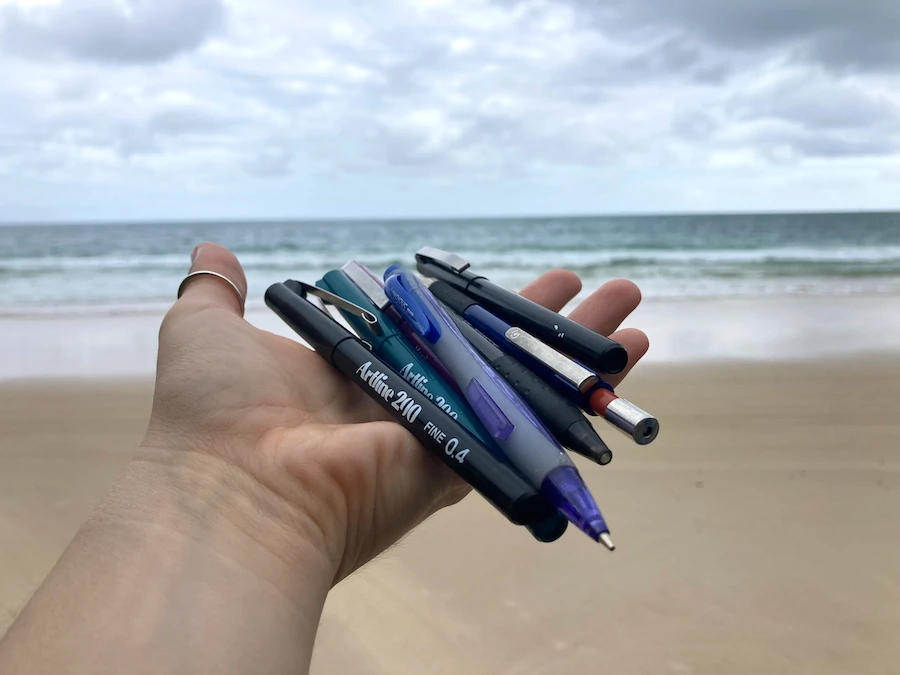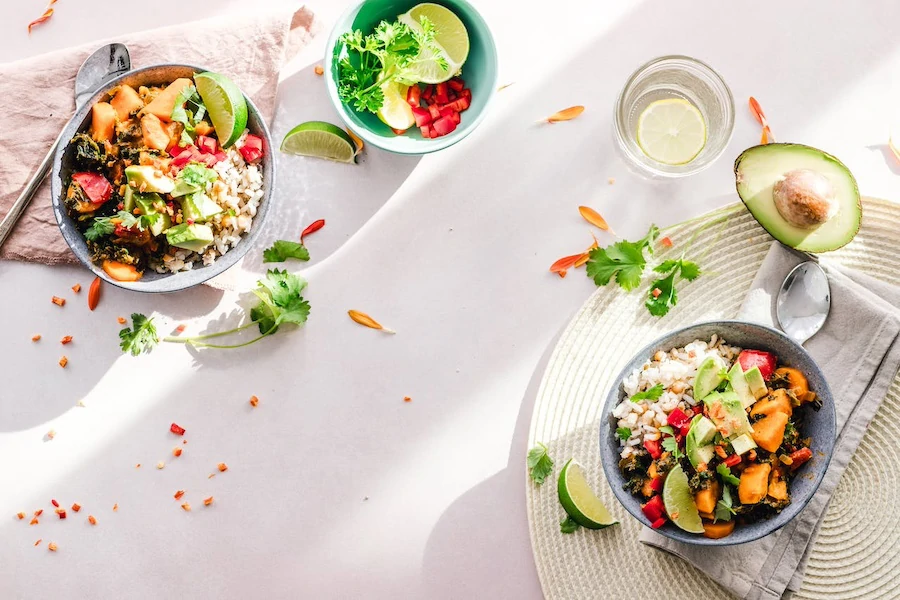I often take for granted the softness and comfort of my bamboo sheets when I pull them back each morning.
One thing that always amazes me is how a towering bamboo stalk can transform into luxurious bedding. If you’re curious about the magic behind bamboo sheets, you’re in for a treat.
This beginner’s guide takes you through how bamboo sheets are crafted. From bamboo forests to the coziness of your bed, get ready to uncover the covers and unravel the threads.
Table of Contents
ToggleHow Are Bamboo Sheets Made?
It should be no surprise that bamboo sheets are made from bamboo!
Here’s a basic rundown of how they come about:
1. Harvesting the Bamboo Plant
Traditional harvesting of resources for textile use could be more eco-friendly. However, how bamboo is harvested and grown has significantly changed that.
While bamboo is still grown across large expanses of land, it is harvested by cutting mature plants at the base above the ground. This allows the roots to remain in place, minimizing soil disturbance and the need for tilling. It also allows the bamboo plant to regrow!
Bamboo fiber comes from a particular species of bamboo that bears an uncanny resemblance to timber. In case you didn’t know, bamboo has a family of over 1,400 species. The process for manufacturing bamboo fiber can vary depending on the required fabric production.

2. Extracting the bamboo fibers
The extraction of the bamboo fibers involves splitting and processing the stalks via mechanical or chemical methods.
Mechanical Methods
Mechanical processing or crushing breaks down the woody outer layers of the bamboo to expose the cellulose fibers. The crushed bamboo is then subjected to a process known as ‘retting,’ which involves soaking the material in an enzyme mixed to further break down non-fibrous components.
After the retting process, the soft bamboo materials are combed (mechanically or by hand) to separate fibers for cleaning and further processing.
Chemical Methods
During chemical processing, bamboo is crushed and treated with sodium hydroxide, carbon disulfide, and sulfuric acid. This eventually hardens the viscose and reconverts it to cellulose bamboo fiber. This process is often referred to as the Rayon process.
A closed loop method
Another extraction method is the closed-loop lyocell process.
It is considered a greener chemical process and involves dissolving the bamboo into a cellulose solution with an organic solvent known as N-Methylmorpholine-N-Oxide (NMMO). The solution is then extruded through spinnerets to form fibers coagulated in a solvent bath that reclaims the NMMO solution so it can be reused.
3. Weaving the bamboo fibers
Bamboo fabrics can come in various weave patterns – bamboo sheets are no different.
Bamboo sheets can come in different weaves or stitch patterns, including:
- Sateen: A higher number of crosswise (weft) threads and lengthwise/vertical (warp) threads that give off a subtle smoothness or sheen.
- Percale: Crisp with a simple one-over-one-under pattern with a matte finish.
- Twill: Diagonal weave with a distinct, textured finish.
- Jacquard: Created by passing different colored weft threads over and under warp threats to build a tapestry-like finish.
- Herringbone: V-shaped weave pattern that leaves a subtle zigzag finish.
- Basket: Crisscrossed pattern like a basket with a slightly chunky feel.
- Matelasse: Quilted or padded weave that creates a raised, plush texture.
- Knit: Knitted, not weaved! It is less commonly used for sheets because it gives a stretchier feel.

Kinds of bamboo fabric
If you’ve started to shop for bamboo sheets, you will undoubtedly have noticed the different kinds of bamboo fabric. The significant differences between them depend on the fiber extraction methods mentioned earlier.
Bamboo Rayon or Viscose
Bamboo rayon, also known as viscose, is produced via the chemical extraction method. Rayon fabrics are known for their smooth texture and softness – it’s no surprise people like bamboo rayon for a luxurious sleep!
Unfortunately, the chemical extraction process does mean the bamboo fibers are exposed to chemicals. The Federal Trade Commission requires appropriate bamboo product labeling with false advertising, resulting in fines.
Lyocell or Tencel Bamboo
Manufactured using the lyocell process, you can typically find lyocell bamboo sheets under the Tencel brand name. Tencel bamboo is far more eco-friendly in comparison to rayon bamboo fabrics. The solvents used for dissolving the bamboo are non-toxic and utilize a closed-loop system, which means low emissions and minimal waste.
This process also uses minimal water consumption. Most eco-friendly brands that use this process are not only because it’s greener, but it’s also a highly sustainable processing option for bamboo fabric.
Bamboo Linen
Bamboo linen is also a standard fabric option. As the name suggests, it is a blend of bamboo and linen fibers from the flax plant. It isn’t as soft as rayon bamboo and wrinkles easily, but it does offer texture, good breathability, and moisture-wicking.
How to Maintain Bamboo Sheets

Because bamboo fibers differ vastly from cotton, you must treat your bamboo bed sheets differently.
In most cases, you will get bamboo sheets with special care instructions to maintain your specific fabric. Avoid using vinegar and bleach-based products. Acids like vinegar, along with bleach, can ruin your bamboo sheets. Choose baking soda or other natural cleaning ingredients.
Make sure that you wash your sheets gently in cold water. If you have darker-colored sheets, make sure that you wash them along with similar or darker-colored fabrics. Finally, dry your sheets on a gentle and low cycle. Some brands encourage buyers to air dry or hand their sheets if possible.
More to Love About Bamboo Bed Sheets

When talking about bamboo, most of us think they are a versatile plant that pandas eat as snacks. Some might also think of bamboo as something people install as furniture or flooring for a new house.
You may be surprised that the bamboo plant has natural antimicrobial and antibacterial properties and wicks away moisture naturally.
These qualities, along with its durability, thermoregulating features, and softness, combine to make bamboo an excellent material for adding to bedding like pillows and sheets. A few of the best bamboo sheet brands set the industry standard for bamboo bedding.
Final Thoughts
The journey from bamboo plants to the luxurious fabric that graces our beds involves intricate processes that harness the natural qualities of this versatile plant.
Whether through mechanical, chemical, or closed-loop extraction methods, bamboo sheets offer a range of textures and benefits that cater to diverse preferences. Be sure to check the fabric type before purchasing to make sure you choose the best bamboo sheets for you or your family.



